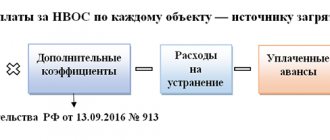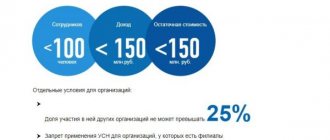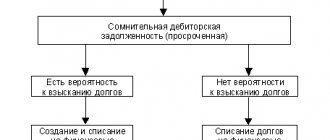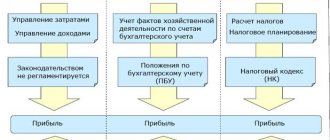When can payment be confirmed?
In order to clarify the tax payment, you need to use the rules of Article 45 of the Tax Code of the Russian Federation. The rules of this article establish a procedure for clarification if an organization or individual entrepreneur has discovered an error in a tax transfer payment, which did not lead to non-transfer of tax to the budget. In this case, the taxpayer can write a tax application, indicating his error and attach documents that confirm payment of the tax. In addition, in the application, the taxpayer asks to clarify the transferred payment, namely, its basis, affiliation, tax period, or payer status.
Important! The taxpayer can clarify the payment only if his mistake did not lead to non-transfer of tax to the budget.
Do you want to clarify your payment? Report this to the Federal Tax Service!
Clause 7 of Art. 45 of the Tax Code of the Russian Federation establishes: if a taxpayer an error in the execution of an order for the transfer of tax, which does not entail (!) the non-transfer of this tax to the budget, he has the right to submit a statement about the error to the inspectorate at the place of his registration.
The document submitted to the tax authorities must contain a request to clarify the basis, type and origin of the payment, tax period or payer status. Documents confirming the payment made must be attached to the application.
Obligation to pay tax
The responsibility of each taxpayer is to timely and independently pay taxes to the budget. To pay the tax, a payment order is filled out, following the Rules for Indicating Information (approved by Order of the Ministry of Finance of Russia No. 107n dated November 12, 2013).
The Tax Code contains information (Article 45) about in which case tax payment may be considered unfulfilled:
- The treasury account number is incorrect;
- The name of the recipient's bank was incorrectly indicated, which resulted in non-payment of tax to the budget.
There are no errors in the BCC or payer status as a basis for considering the taxpayer as having failed to fulfill his obligation to pay tax (
Unexplained payments: reasons for their occurrence
Home Articles Authority Interdistrict Inspectorate of the Federal Tax Service No. 9 for the Tambov Region Unexplained payments: the reasons for their occurrence
When paying taxes and fees to the budget system of the Russian Federation, the correct completion of payment orders is of great importance. If they are completed with errors, then the taxpayers’ funds are included by the treasury authorities in the category of “unexplained”.
The fact is that the budget system has a complex structure and inaccuracies in settlement documents lead to the fact that funds do not go to the budget or are accounted for under another type of tax. In such cases, discrepancies arise in the accounting of taxes paid between the data of the taxpayer and the tax authorities. As a result, sanctions may be applied to organizations or individuals - from the accrual of penalties to the forced collection of arrears.
Let's consider what errors in payment documents cause arrears. The inspectorate's work practice shows that most often payers, when filling out payment orders, make mistakes when indicating the budget classification codes (BCC), INN and KPP of the payee; OKATO inspection code.
In all cases, the receipt of payments in the category of “unclarified” creates problems for both payers and tax authorities.
What actions do the tax authorities take in such a situation, and what should taxpayers do under such circumstances?
As for the tax authorities, their activities can be divided into two stages: upon receipt of an uncleared payment and preventive work: - upon receipt of an “uncleared” payment, the inspectorate takes the necessary measures to further determine the payment; — the inspectorate carries out individual work with taxpayers who repeatedly make mistakes to explain the procedure for filling out payment documents.
To help taxpayers, inspectorates have installed stands with examples of filling out “payment forms”; if necessary, they can receive personal advice from an inspector.
Taxpayers can also use the services of the website of the Office of the Federal Tax Service of Russia for the Tambov Region www.r68nalog.ru, “Fill out a payment order”, “Address and payment details of your inspection”, “Payment of state duties”.
Now let’s look at the mistakes of payers, for which payment orders are classified as “unexplained”.
First of all, due to inattention when filling out the payment document.
Often, the taxpayer lacks basic knowledge of filling out a payment order and transfers funds without making sure that it is completed correctly.
Therefore, I would like to remind you that the obligation to pay tax is not considered fulfilled, in particular, if the payer incorrectly indicates in the order to transfer the tax amount: - Federal Treasury account number; — name of the recipient bank.
As a result of such errors, the inspectorate has grounds to send the payer a demand to pay the tax and take measures to enforce the specified obligation.
In order to fulfill his duties, the taxpayer must correct the error by submitting an application to the inspectorate at the place of registration, attaching documents confirming payment of the tax and its transfer to the budget to the appropriate federal treasury account.
Speaking about indicating the budget classification code when filling out a payment order, I would like to especially draw your attention to the fact that the 14th category of the BCC is used for separate accounting of the amounts of tax (fee), penalties and monetary penalties (fines) for a given tax (fee) and this category is interconnected with field 110 of the payment document.
To avoid classifying payments as “unexplained,” the taxpayer must correctly fill out payment documents and constantly monitor the timeliness and completeness of receipts of taxes and fees to the budget.
Department of registration, accounting and work with taxpayers.
The procedure for tax authorities to work with unclear payments
For tax authorities, an unclear payment is considered to be:
- Payment according to a settlement document in one of the fields of which the taxpayer did not indicate information or indicated it incorrectly;
- It is impossible to clearly define a payment for tax authorities to reflect in their information resources.
In other words, if the tax authorities cannot attribute a payment to a specific tax, due to the fact that there is not enough information in the payment order, they classify it as unclear payments. The tax authority collects information on all outstanding payments in one statement for accounting for outstanding receipts. This statement contains information on the following payments:
- Assigned to the KBK for uncleared receipts;
- Executed in violation of the Rules;
- Payments that cannot be classified according to the cards of certain taxpayers;
- Payments for which a specific taxpayer does not have payment cards open.
Registration and sending
Prepare four copies of the document at once to change the purpose of payment in the payment order; be sure to have the letters certified by your manager. One copy will remain with the company, the second will be sent to the counterparty, and one copy each for the recipient and payer banks.
There are several ways to send a document. For example, in person at a meeting, send a letter by mail or courier delivery, or, as a last resort, by email. But online correspondence is considered the most unreliable way to send a message. After all, the recipient may not even read the letter.
After sending, the letter should be registered in the journal of outgoing documentation and filed together with the current primary document of the company. It is acceptable to attach a copy of the clarification letter to the payment order with an error. Keep the application for at least three years.
Clarification at the request of the tax office
When the taxpayer himself discovers an error that does not entail non-payment of tax, he independently sends an application to the tax office to clarify the payment.
When the tax authority finds such an error, it informs the taxpayer of the need to clarify the payment. Such a message contains information that the tax transfer payment was issued in violation of the Rules and indicates a specific violation. Variants of indicated violations:
- KBK or OKTMO are indicated incorrectly or not indicated at all;
- The TIN of the payer or recipient is incorrectly specified or not specified;
- The checkpoint of the payer or recipient is not specified or is specified incorrectly;
- The taxpayer is not registered with the tax authority;
- Tax paid for a third party (
What to do if you entered the payment details incorrectly - IAUB
Katerina Ladyzhenskaya, Deputy Director of the Sales and Marketing Department at Platinum Bank
The cashier has a certain list of documents that guide him in his work. First of all, NBU Resolution No. 174, as well as internal regulatory documents of the bank.
If the payment document does not contain all the details, the sending bank does not have the right to send such a payment, and the receiving bank does not have the right to accept it. At the same time, the payer bears responsibility for the accuracy of this information (according to NBU Resolution No. 22).
If the incorrectly specified account is active, the payer contacts the bank through which the funds were transferred. In turn, the bank sends a notification to the improper recipient (through the bank serving him) about the erroneous transfer and the need to return the specified amount within three business days from the date of receipt of such notification.
In case of violation of this provision, he is liable in accordance with the legislation of Ukraine. If the improper recipient fails to return the funds within the specified period for any reason, their return is carried out in court.
At the same time, the bank servicing the improper recipient is not responsible for the timely submission by him of the settlement document for the return of funds mistakenly credited to his account.
Elena Frankovskaya, First Deputy Chairman of the Board of Russian Standard Bank (Ukraine)
According to the requirements of NBU Instruction No. 22 dated January 21, 2004, the bank is obliged to check the completion of the following details: “Payer”, “Payer Code”, “Payer Account”, “Payer Bank”, “Payer Bank Code”, as well as “Print Place” and "Payer's signatures." And if one of the listed items is not filled in, the transfer will not be carried out.
In turn, the recipient's bank credits funds to the accounts of its clients only after checking the details and, most importantly, if they match. That is, the recipient’s bank is obliged to check the correspondence of the client’s account number and its code, which are indicated in the electronic document. In case of discrepancy, the bank has the right to withhold the transfer amount for up to four working days to determine the proper recipient of these funds.
If an error was made by the payer, then the funds were credited to the account of the incorrect recipient, then the latter must return them within five days from the date they were credited to the account (Decree of the President of Ukraine dated March 16, 1995 No. 227).
If the bank is guilty of an erroneous transfer of funds, and the funds are credited to the account of an incorrect recipient, then the bank is obliged, immediately after discovering its error, to transfer these funds to the account of the recipient to whom they were intended. At the same time, the bank that erroneously transferred the funds is obliged to send a notification to the improper recipient (directly or through the bank serving this recipient) about the erroneous transfer and the need to return the specified amount within three business days from the date of receipt of such notification. The bank serving the improper recipient, having received the notification, transfers it to the recipient against signature or sends it by registered mail.
Elena Derkach, Project Manager of the Savings and Transactional Products Department of OTP Bank
The sending bank must accept the completed document from the client or fill out the document independently and certify it with the payer’s signature. With his signature, the payer confirms the correctness of all specified details, amount, and purpose of payment. The sending bank can influence the payment only within the framework of current legislation, namely: control compliance with existing restrictions on amounts and account modes.
If the purpose of the payment does not contradict the current legislation, the sending bank does not have the opportunity to control its correctness, since this is the prerogative of the recipient and the payer. The receiving bank has the right to credit funds to the recipient's account if the recipient's details are specified correctly and the essence of the transfer does not contradict current legislation.
If the recipient's account was incorrectly indicated, the funds are credited to the "Amounts pending clarification" account in the recipient's bank and returned to the sender on the fourth business day; At the client’s initiative, the sender’s bank sends a request for a refund to the recipient’s bank; The client independently resolves the issue with the improper recipient.
The sending bank will not be physically able to send the payment if at least one of the required details is not filled in or is grossly violated; accordingly, the receiving bank will not be able to receive them.
Ruslan Volynets, Director of the Retail Sales Department of Nadra Bank
Responsibility for the correct completion of the details of the payment document lies with the party that prepared this document and submitted it to the bank for servicing. The sender's bank exclusively checks the completeness of filling in the details in accordance with internal regulations, as well as the instructions of the regulator.
Verifying the correctness of the details is the responsibility of the recipient's bank. If an error is detected in the details, the receiving bank records the funds in separate accounts “until clarification” (up to 3 days), then, if the sending bank does not recall the payment, the receiving bank returns them to the sender’s account.
If the current account is incorrectly indicated, the bank may request the return of such a payment; as a rule, the recipient bank records the funds from it in separate accounts “until clarification”. If an agreement is concluded between the bank servicing the payment and the payee (legal entity), then any details of the payment document can be checked during the operation, since they are known to the paying bank, and such errors will be excluded.
Tatyana Krikun, head of cash department at Khreshchatyk Bank
When accepting payments in cash through the bank's cash desk, the cashier is primarily guided by NBU Instruction No. 174 on the conduct of cash transactions by banks in Ukraine, as well as internal regulatory documents on the conduct of cash transactions, which fully meet the requirements of the above-mentioned Instructions.
In particular, to draw up a cash document when accepting payments in cash, which is called an “application for cash transfer,” the cashier is guided by Appendix No. 16 to the Instruction “Rules for filling out the details of cash documents.” The Cashier is required to complete the Cash Transfer Application in accordance with the requirements of this application.
Alexander Shevchenko, press secretary of UkrSibbank
An employee of a branch of any bank always makes a payment using the details specified by the client. If one of the details (it is not so important which one) is not correct, the sender can write an application to clarify the details, after which the sent transfer will be credited to the correct account.
In the same way, the ruler can write an application at the bank branch for the return of money sent to the wrong address. The bank, in turn, will independently withdraw funds from the erroneous account and transfer them according to the details specified by the client.
Galina Terletskaya, head of the retail services department of the All-Ukrainian Development Bank
If the name of the recipient is incorrectly indicated in the payment details - this does not mean a spelling error, but, for example, a completely different client is indicated - the receiving bank will not accept such a payment, the funds will be credited to the account of unknown payments and the sending bank will receive a request for clarification of payment details. If there is no response to the request for clarification from the sending bank, the receiving bank sends the funds back. The dispatch period is limited to three days.
As for the purpose of the payment, there are no clear rules; usually this field should contain information about: what the payment is for, according to what, the presence of VAT (if in favor of a legal entity). If the payment is made to the account of an individual, the receiving bank has the right not to accept the payment if there are signs of entrepreneurial activity in the purpose of the payment.
If the payment details indicate an incorrect account, the receiving bank will not accept such payment, the funds will be credited to the account of unidentified payments and the sending bank will receive a request to clarify the payment details. If there is no response to the request for clarification from the sending bank, the receiving bank sends the funds back. The dispatch period is limited to three days.
In order to return funds paid to an incorrect account, you must contact the bank branch where the payment was made and provide a statement confirming the correct recipient's account or an application for a refund.
Tax authority decision
The tax office makes the decision after receiving an application from the taxpayer and reconciling the calculations (if a decision has been made to carry out the payment. The payment is specified on the day the tax is paid in fact. Also, the tax office must recalculate the penalties that were accrued on the tax during the period while the amount was “hanging” in the unknown payments.
Important! The tax authority notifies the taxpayer of the decision on outstanding payments within 5 days from the date of its adoption.
The result of interaction with the INFS regarding unclear payments
Based on the taxpayer’s application and the act of joint reconciliation of calculations (if one was carried out), the inspectorate makes a decision to clarify the payment on the day of actual payment of the tax.
In this case, the tax authority recalculates the penalties accrued on the amount of tax for the period from the date of its actual payment to the budget until the day the Federal Tax Service Inspectorate makes a decision to clarify the payment. The taxpayer will be notified of the decision to clarify the payment within five days after the decision is made.
Clarification on payment of insurance premiums
The procedure for clarifying an unclear payment for an insurance premium is similar to the procedure for clarifying a tax payment. But there are some clarification features:
- Details of insurance premiums are specified only when the information on this payment is not reflected in the personal account of the insured;
- Details are specified depending on when the payment of contributions was made. If an old payment made before 2020 is being clarified, then you need to contact the Pension Fund, and after January 1, 2017, it needs to be clarified with the Federal Tax Service.
When should you worry about payment non-delivery?
The transfer delivery time depends on many factors: which bank the money is sent to, in what currency, what amount, etc. If the payment amount exceeds 600 rubles, then, according to 115-FZ, the bank has the right to demand documents on the basis of which this payment is made, for example, a purchase and sale or gift agreement. Until these documents are provided, payment may be blocked.
Transfers within the bank take place within one day. Exception: payments made late may be processed the next day. Transfers outside the bank take longer (up to 3-5 business days). This depends on the speed at which money is credited to interbank accounts. For example, if a payment is made late on Friday evening, it may not be processed until Monday morning. As a result, the translation delivery time extends to a week.
Thus, if the transfer was not delivered within the bank within 1-2 days, and via interbank within 3 business days, then you should start looking for where it went.
The legislative framework
| Legislative act | Content |
| Order of the Ministry of Finance of Russia No. ММВ-7-22/ [email protected] dated July 25, 2017 | “On approval of the procedure for tax authorities to work with unclear payments” |
| Article 45 of the Tax Code of the Russian Federation | “Fulfillment of the obligation to pay taxes, fees, insurance premiums” |
| Order of the Ministry of Finance of Russia No. 107n dated November 12, 2013 | “On approval of the Rules for indicating information in the details of orders for the transfer of funds for payment of payments to the budget system of the Russian Federation” |
Documenting
If the authority has registered an unclear payment, a request is created and sent to establish the ownership of the funds. The request is made in form 0531808. To clarify the payment, a corresponding notification is provided. The purpose of the notification is to correct incorrect details to correct ones. The need to send this document is stipulated in paragraph 2 of Article 160.1 of the Budget Code. The provision concerning the situation under consideration is also contained in paragraph 56 of Order of the Ministry of Finance No. 125n.
If the payment was sent incorrectly, the money must be returned to the taxpayer. To do this, create a return application in form 0531803. It must be sent to the treasury.










